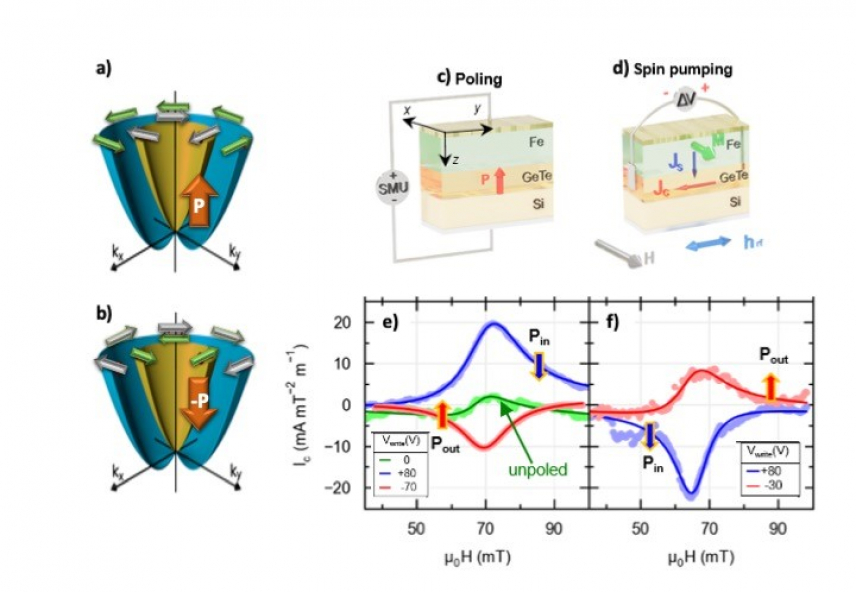An international team of researchers coordinated by Christian Rinaldi from Politecnico di Milano has unveiled the potential of germanium telluride (GeTe) for ultralow-power spin-based electronics. These findings were reported in the Nature Electronics issue of October 2021 (click here for a view-only full-text access).
GeTe is the prototype of the class of materials called ferroelectric Rashba semiconductors (FERSC), originally discovered by the group of Silvia Picozzi at CNR-SPIN (including Domenico Di Sante and Paolo Barone) and one of the technological pillars investigated in the PRIN 2017 project “TWEET” she coordinates.
Rashba ferroelectric semiconductors have a Rashba-like spin-splitting of some electronic bands determined by the broken inversion symmetry connected to the ferroelectric displacement. Thus, there is a one-to-one relationship between the orientation of the ferroelectric polarization and their Rashba spin texture, allowing to envisage the electric control of spins in the semiconductor [see Fig. a) and b)].
In this work, the authors show that the ferroelectric polarization of epitaxial thin films of germanium telluride can be switched by electrical gating and used to control spin-to-charge conversion (SCC) through inverse spin Hall effect, in a non-volatile fashion [see Fig. c)-f)]. A prototypical architecture for beyond-CMOS in-memory-computing devices is thus proposed, exploiting the favourable scaling laws of GeTe and the compatibility of the compound with silicon technology.
Nature Electronics dedicates to the results a News & Views article by R. Fei and Li Yang, from Washington University in St. Louis (MO, USA).
The activity has been supported by Ministero dell’Università e della Ricerca (MUR) within the PRIN programme, project no. 2017YCTB59 (TWEET, Towards ferroelectricity in two dimensions), coordinated by CNR-SPIN.
Citation: Varotto, S., Nessi, L., Cecchi, S. et al. Room-temperature ferroelectric switching of spin-to-charge conversion in germanium telluride. Nat Electron 4, 740–747 (2021). https://doi.org/10.1038/s41928-021-00653-2


